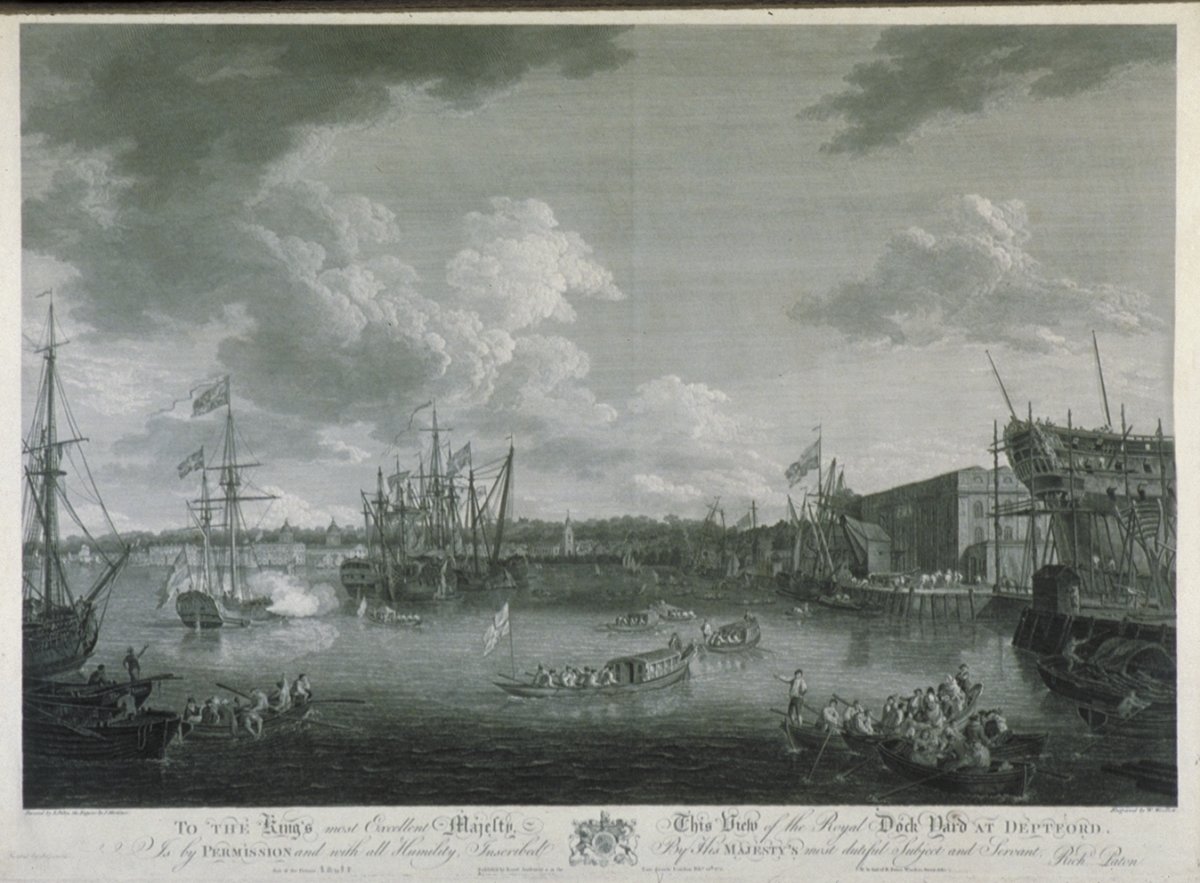Royal Dockyard, Deptford
Richard Paton (1717 - 1791)
John Hamilton Mortimer (1740 - 1779)
William Woollett (1735 - 1785)
Engraving
14 February 1775
-
About the work
- Location
-
Country: UK
City: London
Place: Government Art Collection
-
About the artist
Richard Paton, marine painter, was born in London and is said to have been discovered on Tower Hill as a poor boy by Admiral Sir Charles Knowles. Knowles took him to sea, after which he found employment in the Excise Office, where he was still working at the time of his death. The earliest evidence of Paton painting is the exhibition of two works by him at the Society of Artists in 1762. He continued to exhibit with the Society for several years, before resigning in 1771. Five years later, Paton began to exhibit at the Royal Academy, where he showed his work until 1780. In 1776, he was granted permission by King George III to paint the Royal Dockyards at Chatham and Deptford and the resulting paintings are now in the Royal Collection.
Painter and etcher John Hamilton Mortimer was born in Eastbourne, Sussex; the son of a mill owner and customs officer. In 1756/7 he entered the studio of Thomas Hudson and later worked under Robert Edge Pine. Mortimer sketched at the Duke of Richmond’s sculpture gallery, St Martin’s Lane Academy and Shipley’s drawing academy. His success in winning premiums for history painting (1763, 1764) launched his career. He exhibited at the Society of Artists (1762–77), becoming Director (1768), Vice-President (1770) and President (1774–75). In the 1770s he painted scenes of witchcraft, monsters and bandits. He also painted literary subjects and illustrated books. Mortimer became an associate member of the Royal Academy in 1778. He died aged just 38.
William Woollett was the son of an innkeeper, from Maidstone, Kent. In 1750 he was apprenticed to John Tinney at the Goldsmith’s Company. By 1759, he was studying at St Martin’s Lane Academy. Three years later he married Hannah but, after their five children died in infancy, Hannah also died in 1770. Woollett was later remarried to Elizabeth. His earliest prints are of country houses and gardens, after his own designs. He was first employed by John Boydell in 1760. His engraving after Richard Wilson’s ‘The Destruction of the Children of Niobe’ won him considerable critical acclaim and, as a result, Alan Ramsay invited him to engrave his portrait of George III. Woollett reportedly died ‘from the effect of an accident, unskilfully treated’.
-
Explore
- Places
- Subjects
- Materials & Techniques
-
Details
- Artist
-
Richard Paton (1717 - 1791)
John Hamilton Mortimer (1740 - 1779)
William Woollett (1735 - 1785)
- Title
- Royal Dockyard, Deptford
- Date
- 14 February 1775
- Medium
- Engraving
- Acquisition
- Purchased from Colnaghi, April 1952
- GAC number
- 1551